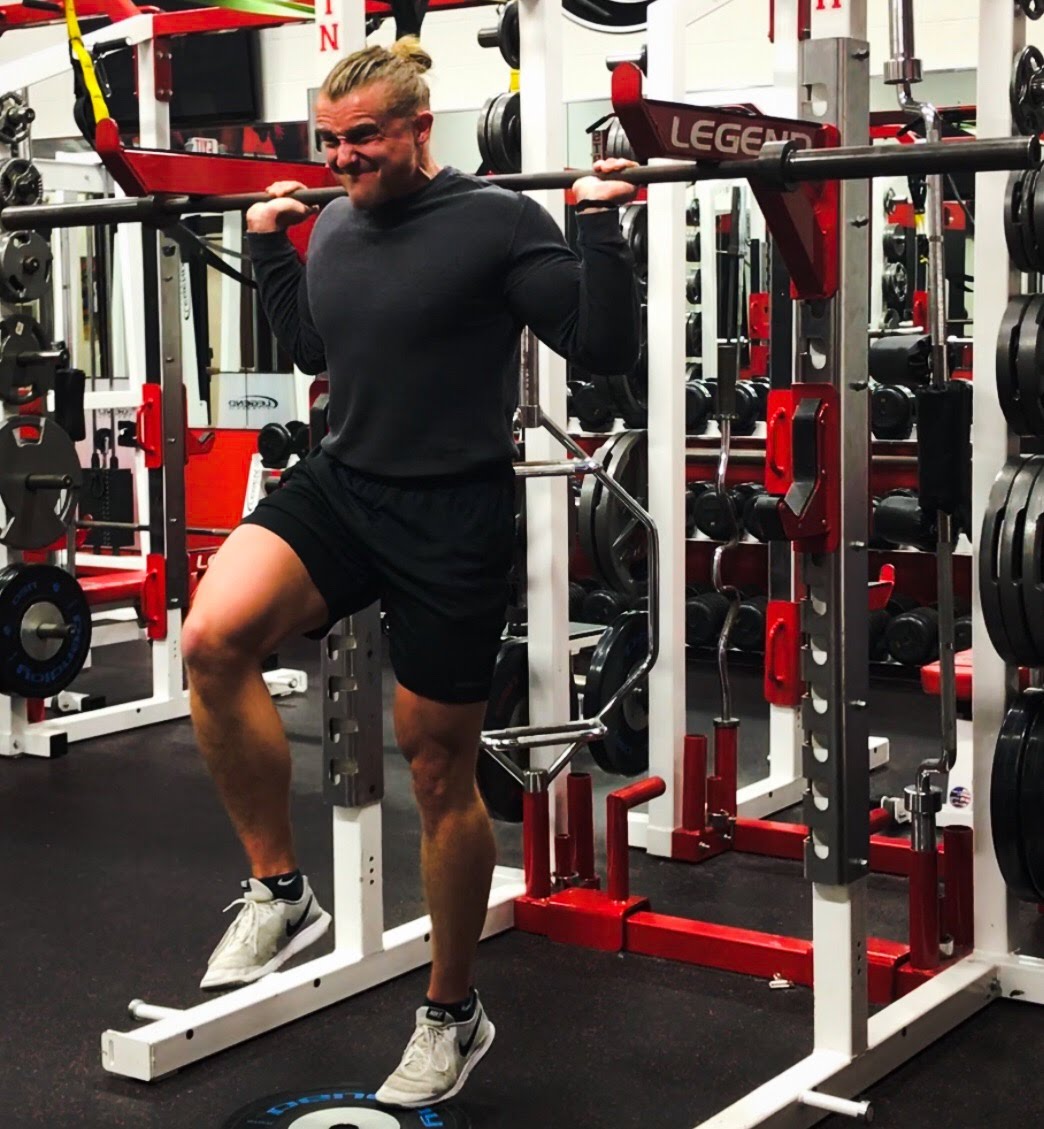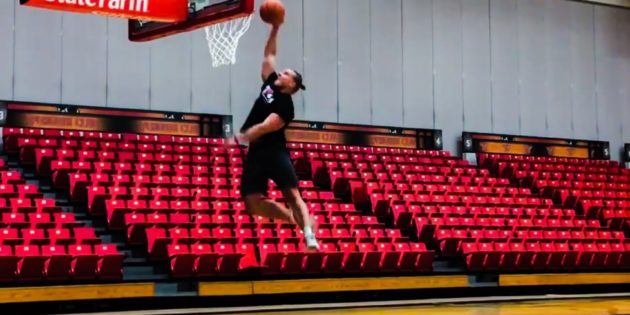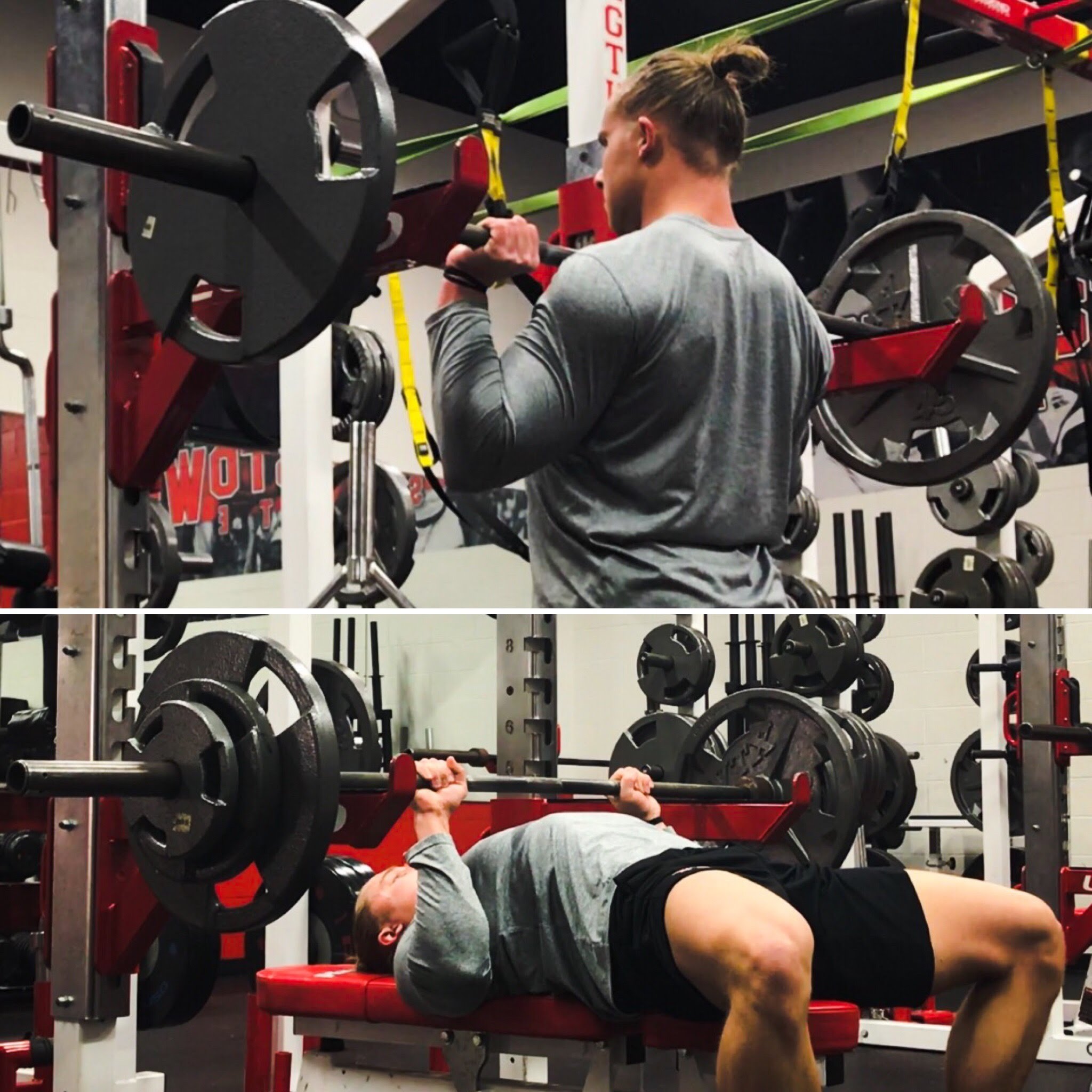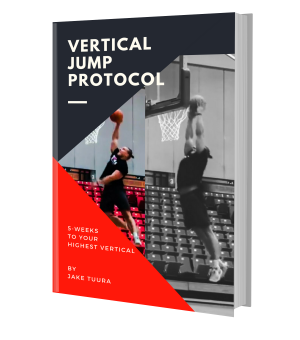Over the last 10 days, I saw these results:
- Standing Jump from 31.5 inches to 34.5 inches (+3.0 inches)
- Approach Jump from 34 inches to 37.5 inches (+3.5 inches)
Here are some things I learned:
1) You Should Be Doing Band Assisted Jumps
Video:
Research: Study here, here, here, and here showing that assisted jump training is effective at improving jumping ability.
Sidenote: You may not even have to change your maximum power output, just improving on your weakness (force or velocity) has been shown to increase vertical jumping ability.
Takeaway: You are probably neglecting high-velocity work in your own vertical jump training. If you’re decently strong, you should be using band assisted jumps to develop velocity. If you’re weak as a kitten, you should also use them, but most of your focus should be on increasing strength.
2) You Should Be Using Concentric-Only Work
Research: A high vertical jump requires high-velocity strength.
High-velocity strength requires fast twitch muscle fiber recruitment.
To recruit these fibers, you need a high rate coding (speed of the signal being sent to the muscle).
Concentrics involve faster rate coding than eccentrics.
Maybe concentric-only training is better at enhancing explosive strength.

Sidenote: Concentric-only training reduces muscle slack – which is a major performance-limiter according to Frans Bosch (read here, point #8). Normal heavy strength training increases muscle slack because of the large countermovement. Concentric-only training seems to be a good way to develop explosive strength while also decreasing muscle slack – there is no countermovement so you are forced to actively pre-tension, therefore decreasing slack.
Takeaway: Concentric-only work trains you to more rapidly apply force (through faster rate coding and decreased muscle slack).
- Conc-Only Lower body:
- Conc-Only Upper body:
- Conc-Only Plyometrics:
Concentric-only should not make up all of your lifting. You still need to build robustness and strength of muscles and tendons with eccentrics and isometrics. But they can enhance vertical jump in areas no other training can – ensuring fast twitch fiber recruitment, decreasing muscle slack, and increasing high-velocity strength.
3) You Should Squat with Band-Resistance
Simple Explanation: When you jump, you accelerate all the way until takeoff. When you perform a typical heavy squat, you do not accelerate all the way to the top otherwise you would leave the ground. Probably not safe with heavy weight on your back. Therefore, regular squats don’t totally mimic the force profile of a vertical jump.
Bands provide an easy solution. With band tension increasing as the bar moves upwards, it’s impossible to get ‘lazy’ and rely on acceleration ‘out of the hole’ like you do in a typical squat.
Accelerating all the way through the concentric phase makes squatting more specific to the nature of vertical jumping.
Sidenote: Chains can be used during slow eccentric or isometric-hold training, but when you perform squats quickly, bands are preferred. This is because they actively pull you down, increasing eccentric velocity. Ability to use a high eccentric velocity is associated with countermovement jump height.
Takeaway: Add bands to your typical strength exercises. You will still target similar strength adaptations, but it will more closely mirror the vertical jump.
Other keys:

4) Lose weight (if you are in the position to do so). I started out at 223 lbs. and ended at 218 lbs. Track and field athletes who lost ~5 lbs. on a low-calorie diet gained ~5.9% on their vertical jump in 4-weeks.
5) Perform specific explosive and isometric exercises pre-training to excite and arouse the nervous system for increased explosiveness. Isometrics also enhance performance in specific weak positions.
6) Manage fatigue. Power is affected by high fatigue levels. Sleep and recover if you want to maximize explosive gains.
7) Strength. This bears repeating. Squatting 515 and Trap Bar Deadlifting 660 make power gains a lot easier to come by. If you’re weak, get stronger first.
8) Maximal Intent. On the upwards portion of every exercise you do, explode as fast as you can. Intended velocity could matter more than actual velocity for explosive gains.
9) Check out the Vertical Jump Protocol for a 5-week plan putting all of this together.











